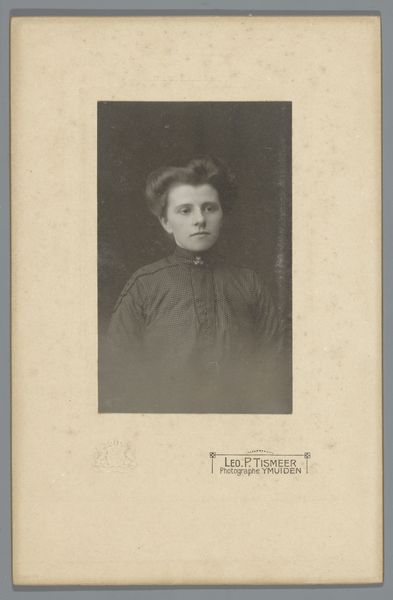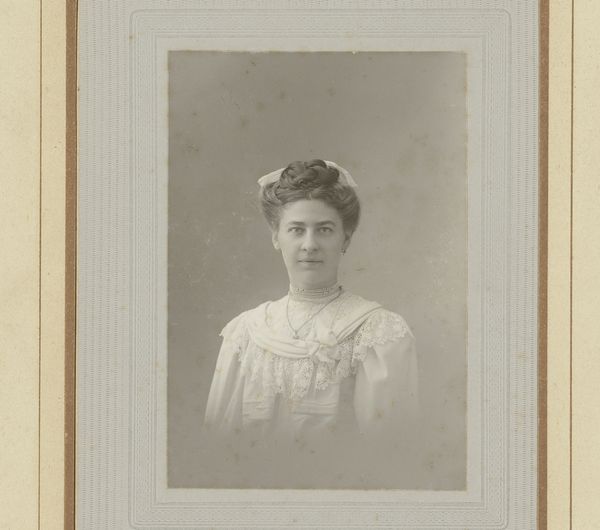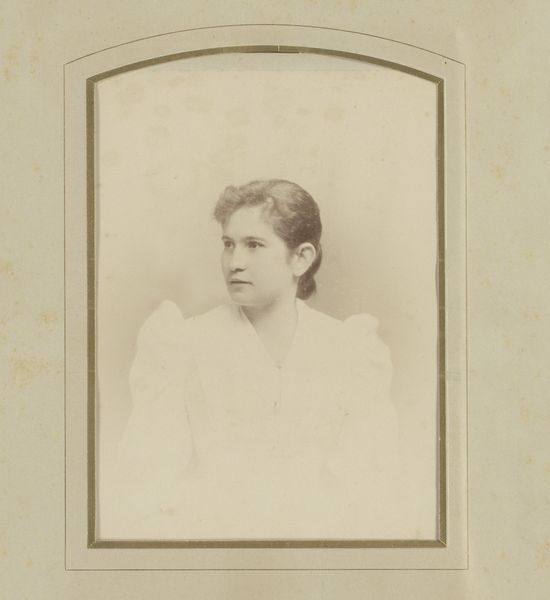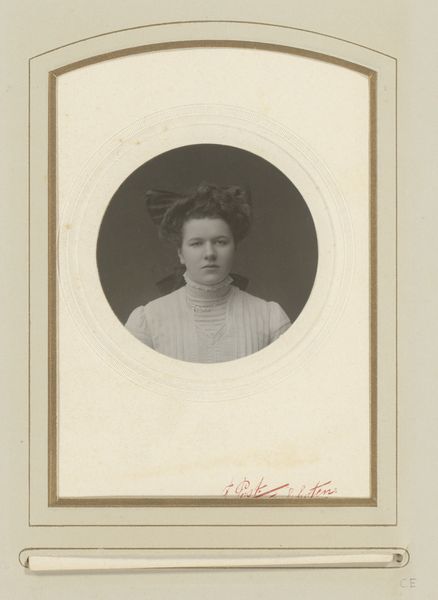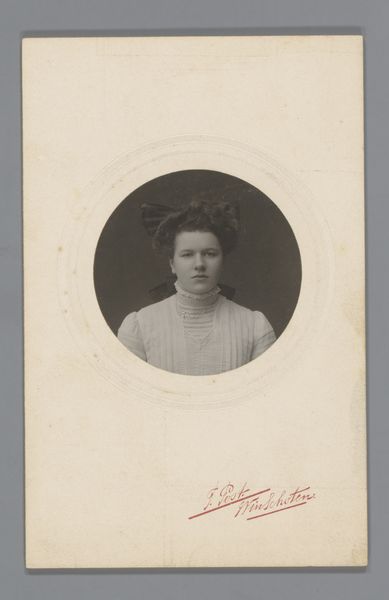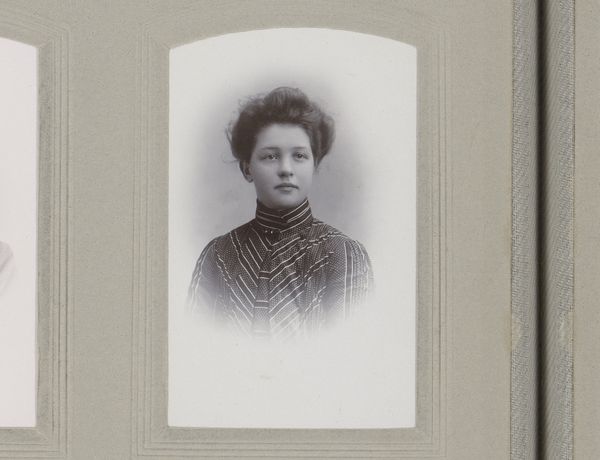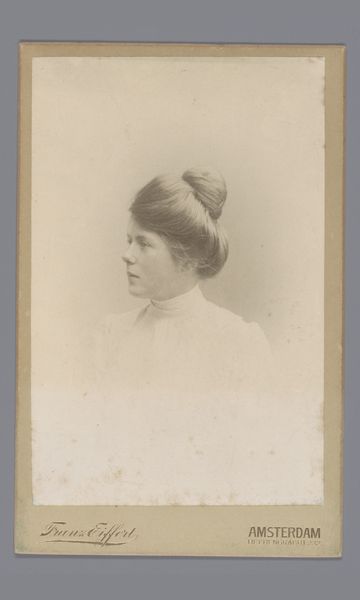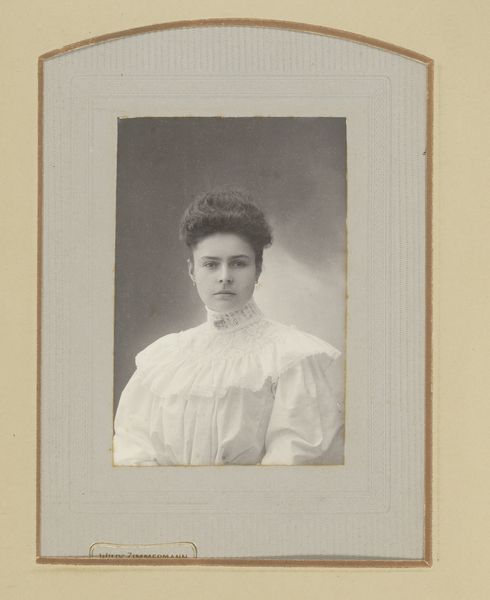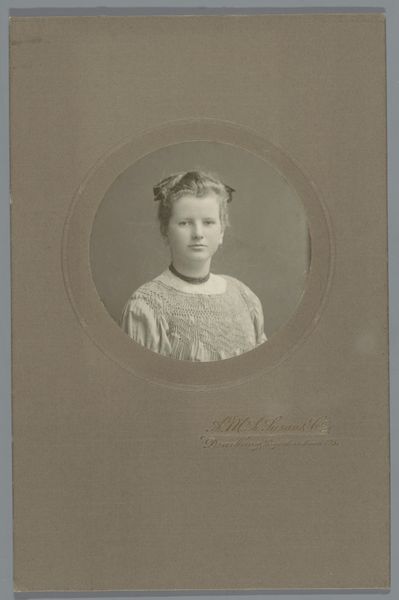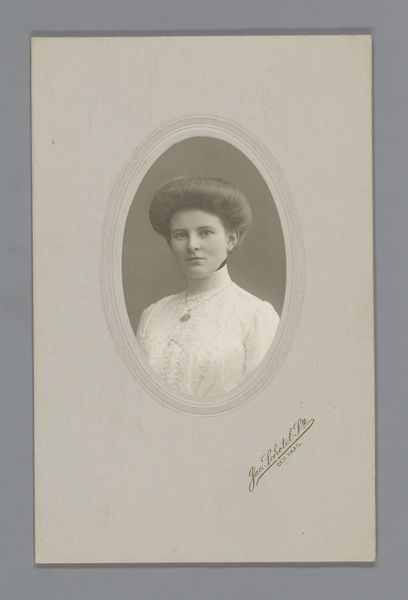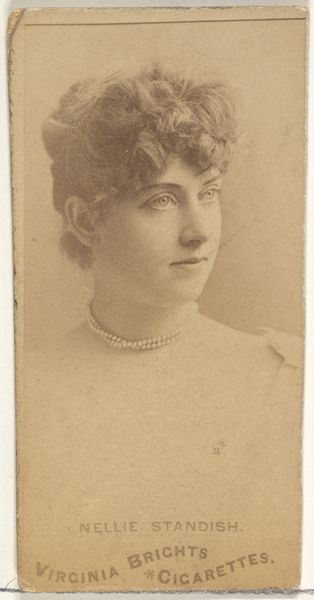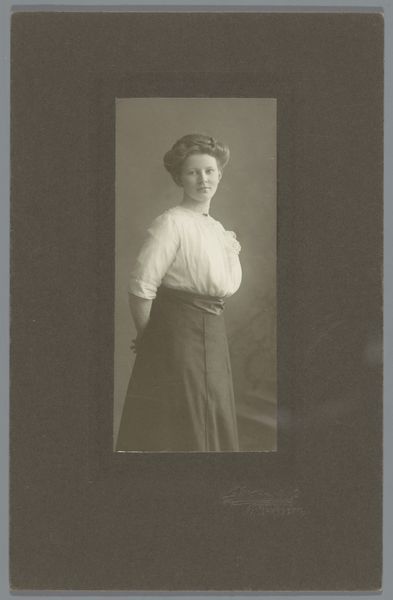
Dimensions: height 83 mm, width 51 mm
Copyright: Rijks Museum: Open Domain
Curator: "Portret van een jonge vrouw," or "Portrait of a Young Woman," is a gelatin-silver print by Otto Borell, dating from somewhere between 1895 and 1920. When I look at it, I think "soft." The light, the expression, the tones—everything has this incredibly gentle quality. Editor: Yes, "soft" is a good word for it. There is that beautiful tonal range you get with gelatin-silver prints from this era that absolutely contributes to this sense of quiet intimacy, though. These portrait studios were crafting a very specific kind of image. The slightly hazy effect makes it difficult to distinguish exact detail and that was intended to show the subject idealized. Curator: It definitely makes me think about what she might have been like! Look at how Borell captured the lace detail on her collar and blouse, too. So precise, amidst the soft focus everywhere else. Almost dreamlike, as you say. I wonder what she was dreaming about back then, you know? Being frozen at a particular time like this…it has to have had some bearing on that woman’s personal idea about herself, right? The final image becomes part of that idea. Editor: Well, these portrait studios were really catering to a rising middle class. Owning an image like this, presented with a touch of fine art pictorialism, wasn't just about documentation. It was about aspiration, class presentation, and fitting into emerging social norms. Also important is thinking of photography within this particular slice of time that would not have seen such proliferation of casual or "common" portraits like we do now. Curator: Still, there's this undeniable sense of melancholy in her expression. A world on the cusp of tremendous change and… well… hardship. Is that me projecting, or do you feel that too? Editor: No, it’s there. Knowing what the world was like in the years spanning that date, there is definitely an overlay. Also we should ask to what degree that softness itself contributes to our feelings of loss here. The lack of hyperclarity obscures definitive meaning; it makes for an openness and we perhaps take advantage of that to construct the “melancholy.” Curator: Very true. The softness almost invites that personal interpretation. It’s more evocative that way, than say, an Edwardian sharp shot that doesn’t leave much up for question. Editor: Ultimately, it highlights the evolving role of photography. The picture speaks volumes not just about an individual, but about photography’s role in shaping how a particular time period would portray itself and understand self image through the public consumption of image, so well captured here through both detail and effect.
Comments
No comments
Be the first to comment and join the conversation on the ultimate creative platform.
